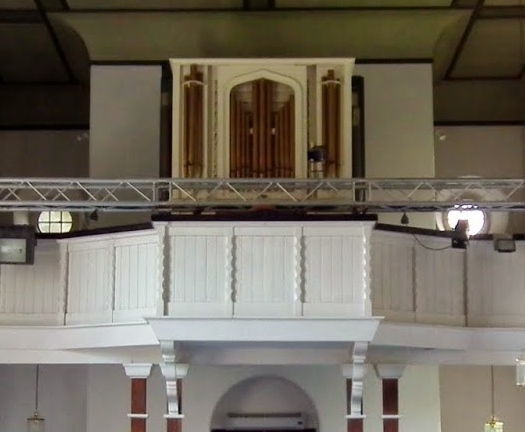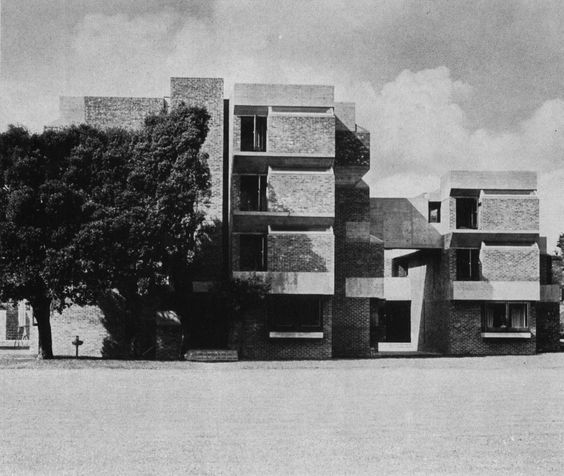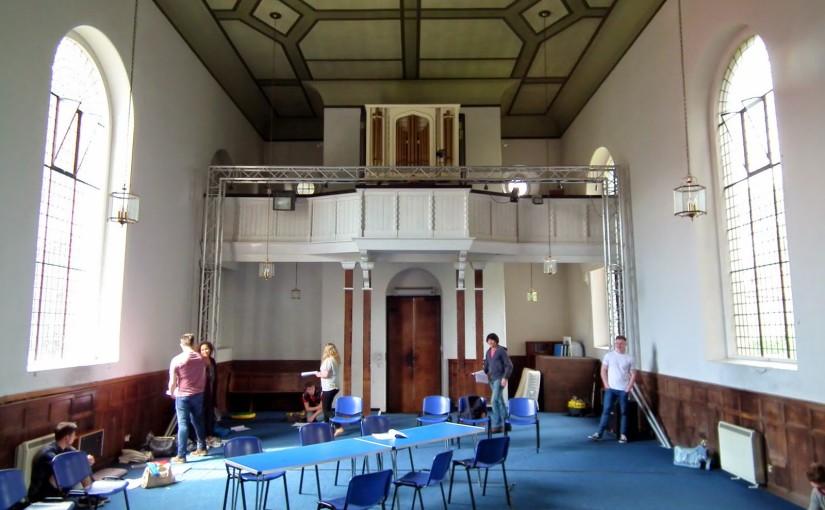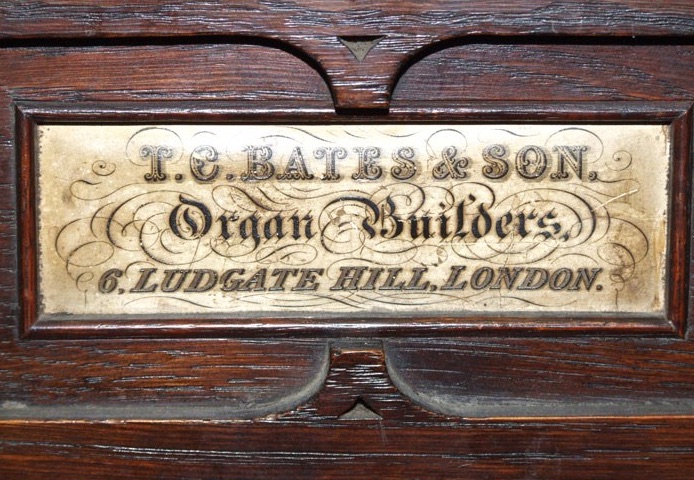A chance encounter with Alan Thurlow, retired organist of Chichester Cathedral, has enabled us to do some more research into the pipe organ which may still be seen inside St Bartholomew’s church (once we can get access!).
Details of the St Bartholomew’s organ can be found under Survey E00701 on the National Pipe Organ Register (NPOR), which is operated by the British Institute of Organ Studies. The data is highly technical but contains items of interest to residents’ interested in the history of Westgate.
The British Institute of Organ Studies(BIOS) owns the NPOR, and also the Historic Organ Sound Archive (HOSA), the Directory of British Organ Builders (DBOB) and the British Organ Archive (BOA). The content of the NPOR is managed under an agreement with the Royal College of Organists (RCO) and the server is located in Emmanuel College Cambridge.

The organ in St Bartholomew’s is installed in the gallery situated over the West door. It was surveyed by the BIOS in 2000 as “playable” and situated in the by now redundant C of E church, then in use as the chapel of the Servants of the Cross religious community and by 2004 up for sale.
St Bartholomew’s was consecrated on 14 July 1832 and on 4 December Philip Armes, then organist of the Cathedral, gave the opening recital of a new “finger organ” which replaced “the old Grinder” (presumably a barrel organ). The new organ – which is in fact the present instrument – was built and installed in 1832 at a cost of £100 by T.C. Bates & Son of 6 Ludgate Hill, London.
This was a period when many chamber organs were being built for churches. Sadly, Bates’ original nameplate on the organ in St Bartholomew’s has been removed at some stage by a souvenir hunter. It was perhaps similar to the one above which was originally attached to one of their barrel organs, for they made those too!
This instrument is one of only ten pipe organs remaining in Chichester. A pipe organ is the name for the kind of organ we are used to seeing in our churches and city halls. Wikipedia writes that:
A pipe organ is a musical instrument that produces sound by driving pressurized air (called wind) through pipes selected via a keyboard. Because each organ pipe produces a single pitch, the pipes are provided in sets called ranks, each of which has a common timbre and volume throughout the keyboard compass. Most organs have multiple ranks of pipes of differing timbre, pitch and volume that the player can employ singly or in combination through the use of controls called stops. (Wikipedia)
Part of our history
The organ is therefore an important part of the history of the church. In 1932 the organ was cleaned by Hele of Plymouth (the firm who had rebuilt the Cathedral organ in 1904) and around 1938 an electric blower was added. It was extensively altered by Cross around 1975. Alan Thurlow writes in that although it is a long time ago since he last saw the organ, his memory is that it was not that much altered.
‘Cross’ refers to the organ builder Martin Cross who operates from Grays Thurrock in Essex. In 1974 Martin Cross restored the historic c.1780 Hurdis Chamber Organ that stands in the Retro-Choir of Chichester Cathedral and is used to accompany services that take place at the Shrine of St Richard. The firm is still in existence today and, at least up until the time of Alan’s retirement in 2008, and probably still now, tunes and maintains that organ together with the Walker Chamber Organ in the Lady Chapel of the Cathedral.
Although its single keyboard and, to some extent, the “old English” pedalboard impose limitations on the player, the organ was still working well in 1986 and was giving good service to the parish and the Theological College.
A future for the organ
Alan says that his 1986 assessment of the Bates organ, from which a lot of the material for this article has been taken, would be much the same as written then, but the report was obviously commissioned from the point of view of the vibrant institution that the Theological College was in those days, and the bright future that it seemed to have. As many local residents will remember, it was a thriving place and financially viable too, embarking on their project to build the new College; until the politics of the Church of England interfered with all that and forced its closure. What a great pity!

We hope that the Residents’ Association, assisted by Alan would fight any attempt to move the organ out of St Bartholomew’s, but should it prove necessary at any time in the future so to do, Alan is of the opinion that the obvious place for it to go would be the gallery at St John’s Church in Chichester. That Church was opened in 1813, so the two are very much of the same period and this would only go to enhance St John’s as Chichester’s premier chamber music venue.

